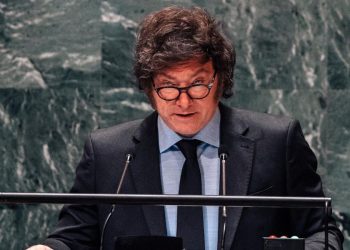By Ivan Pekic –Special Total News Agency-TNA-
It is believed that the use of biological weapons in the operational zone today would be an unlikely possibility, while the use of biological agents in special war, low-intensity conflict, sabotage, and terrorist actions would be more realistic. It would be aimed, above all, at the civilian population, flora, and fauna, while the armed forces are in the background. Covert insidious use of agents would be effective in achieving the goals of exacerbating the crisis, destabilizing the system, and weakening the military potential of the adversary. While the target of a biological attack may be a larger geographical area or a smaller tactically significant territory. Objectives of strategic importance would be large industrial and administrative centers, areas for collecting and regrouping and training units, large transport hubs, important ports, liaison centers, air defense facilities, large livestock farms, and complexes with crop monocultures, etc. In the sabotage-terrorist actions, the targets would be command centers, administrative buildings, closed facilities for sports, cultural, political, and other gatherings, public transport vehicles, larger facilities for shared food, water supply, grain silos, mills, and the like .
During the war, a biological attack would probably be combined with an attack with classic weapons. The advantages of the combined attack are that it would make it easier to disguise the use of prohibited biological weapons, that injuries caused by conventional weapons would be an open door for infection, and that material destruction caused by conventional weapons would hamper the effectiveness of civil protection and health services. elimination of consequences, care and treatment of injured and sick people and animals. A biological attack can also be combined with an attack with tactical nuclear or neutron weapons. The real effects of such an attack are difficult to predict, but it is known that in an irradiated population, resistance to infections would be weaker, the course of infection explosive, and the prognosis much worse. Biological weapons can also be used in a combination of several different pathogens
Biological contamination is the presence of pathogenic microorganisms and their toxins in space, living beings or the atmosphere, after a biological shock. The territory where the biological impact was carried out is called the zone of biological contamination and depends on the type of agent used and the manner of their application, soil, climatic and meteorological conditions, as well as the efficiency of decontamination measures. The boundaries of the biological contamination zone are more difficult to determine than the boundaries of radiological and chemical contamination. The atmosphere is contaminated by the application of a biological aerosol to intentionally cause infection in humans, animals or plants. As covert sabotage-terrorist attacks are the most likely form of biological warfare in modern conditions, their primary targets would be drinking water and food, and agents in the form of powder, liquid or aerosol would be used .
According to UN experts, if a bioaerosol attack on a city whose population was unprepared, surprised, and unprotected took place today, the zone of effective action of a biological strike by an air bomb would be up to 100,000 km2. The time of occurrence of the consequences would depend on the duration of the average incubation and, as a rule, would last several days, the destructive effect would be absent, while the specific effects would be reflected in the biological contamination of the atmosphere, soil, water, food, objects, and surfaces. The possibility of the aggressor occupying the invaded territory would be limited by the duration of the average incubation. The maximum possible effects of such an attack would reach the figure of 80% of infected people, 60% of patients, and 30% of deaths in the primary biocontamination zone.




 Argentina
Argentina USA
USA Paraguay
Paraguay España
España Israel
Israel
















